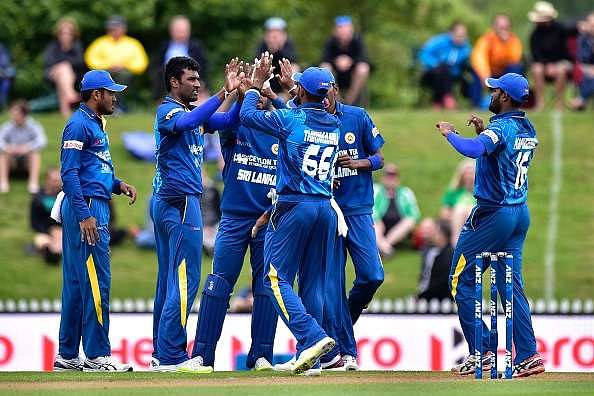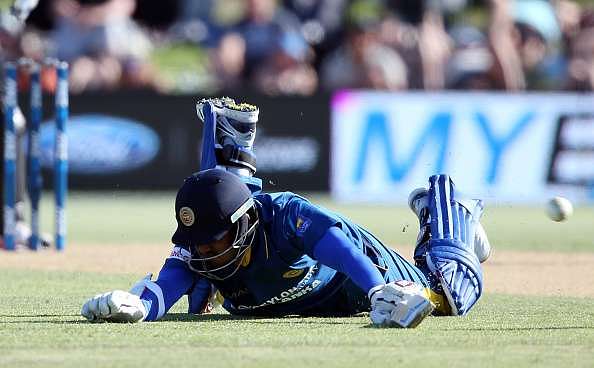
Sri Lanka’s T20 woes: Potent ingredients but a poor recipe
“Can’t learn without making mistakes,” tweeted Kumar Sangakkara. Mahela Jayawardene, on the other hand, to play his part, called for more support for the team. If there is one thing that the Papare Army of Sri Lanka prides themselves in, it is in throwing their entire weight behind their team during times of great strife. Errors can be forgotten. Lack of experience can be tolerated. Inability or lack of talent can be forgiven. But, if the same mistakes are iterated as in an indefinite loop, how long are the fans expected to suffer the insanity?
If, as Sangakkara tweeted, the team cannot learn without making mistakes, then this team must be doing their post-doctoral research right now. If there is actually a dearth of resources, then the fans would have been realistic in their expectations. But when you know, you have got the resources to concoct a great team, and when they are not made use of properly, the indignation can strangle any fan’s emotions.
A squad that has everything
The squad that was announced for the Asia Cup and the World T20 is replete with match-winners. In Dilshan, there is experience and a wealth of cricket knowledge. Dinesh Chandimal, as he has shown in the past, albeit erratically, can turn games on his head. Dasun Shanaka’s towering sixes have already popped up now and then, and if he gets going, then he is somebody who can snatch a match right under the opposition’s nose. Shehan Jayasuriya is a hard-hitting all-rounder and in Kapugedera there is a new found match-winner. Angelo Mathews’s prowess is no more a secret and the bowling lineup doesn’t need another paragraph to lay bare their ability.
Yet, you find them struggle. There has always been an invisible shackle bridling their rambunctiousness. However good the ingredients are, if the recipe is bad, the dish is bound to be malapropos. Yes, the mysterious shackle lies in the way the talents are utilized.
The enigma called Thisara Perera
Thisara Perera replaced the injured Malinga in the game against Bangladesh. He was filling the role of a specialist bowler and yet, he bowled only an over. With the bat he imploded when everyone expected him to explode. Shehan Jayasuriya bowled three overs during a crucial phase of the game, to make up for Perera’s quota of overs. One doesn’t need to understand what gravitational waves are, to infer from Perera’s stats that he hasn’t justified his place in the side either as a batsman or as a bowler, let alone as an all-rounder. And if what Perera’s inclusion is going to boil down to is a part-time spinner filling in the vacancy, then why couldn’t have Jeffery Vandersay been played in the first place? At least, Sri Lanka could have had a leg spinner who has the latent faculty to pick up wickets during the middle overs.
What is potential, if it cannot be converted to something useful for the team? How many times should the bits-and-pieces all-rounder fail so that the management understands that he deserves the boot?
The use of part-time spinners
If playing Thisara Perera was an acceptable mistake since this is not the first time it is coming to pass, then not bowling Dushmantha Chameera early at the Bangladeshi batsmen was a mistake that deserved capital punishment. When Bangladesh were 3 down for a mere 26, instead of bringing on the infernal tearaway fast bowler to inflict more damage on the opposition, Angelo Mathews reclined to the damage control mode by bowling his part-timers.
What more? That was the respite the batsmen needed as they sucked up pressure during that crucial phase and released it back on to Sri Lanka like shockwaves to fling the Lankans further away from the game. Jayasuriya bowled three overs and Dilshan bowled one, and by the time Chameera descended into the act, the batsmen were well settled. Perhaps, with Chameera bowling after the power play overs, Sri Lanka could have managed to run through the Tigers’ batting lineup. If the part-time spinners were brought on by virtue of the pitch being spinner friendly, why wasn’t Milinda Siriwardana, a proven left arm spinner, utilised at all?
A batting order that is confused
The batting order was warped in unintelligible proportions, so much so that even Shahid Afridi mulling withdrawing his retirement announcement would have sounded more logical. Chamara Kapugedera, who during his brief stay looked the most comfortable of all Sri Lankan batsmen, was sent at number eight when the game was all but lost. Milinda Siriwardana, who has repeatedly evinced his ability to hit big right from the word go, was sent up ahead of both Kapugedera and Dasun Shanaka.
Kapugedera is a batsman who takes time to settle in while Siriwardana is a prompt striker. If logic is anything to go by, isn't Kapugedera the one, who should be batting higher? How long will it take for the management to understand that Kapugedera would make a better number four than a number seven or eight? In India, in the face of not scoring heftily, Kapugedera’s sagacious stroke making proved that Sri Lanka could profit immensely by playing him at the position. What was the need to send in Angelo Mathews, a finisher at number four? Does the management think that a top order batsman like Kapugedera or an inexperienced rookie like Dasun Shanaka can seal off tense chases?
Angelo Mathews’s stymieing innings didn’t help Sri Lanka’s cause either. It is a well-established fact that Mathews loves taking his time much like MS Dhoni. The captain of the test and ODI sides is often seen playing out dot balls and hogging strike, all in good intentions, to get settled and launch at the fag end of an innings. Even though, nonchalantly playing dot balls needs immense self-confident, failing to complete the task can make the innings look ugly as it was the case with his innings against Bangladesh.
His innings was perilously bordering on arrogance and one needs to question the necessity to do that given the kind of batsmen Sri Lanka had at their disposal. Mathews’s obduracy resulted in wickets at the other end as he remained aloof about playing out dot balls and turning down doubles. His style of play might perfectly suit a finisher, but while batting at number four, Mathews can’t afford to do that.
Sri Lanka, in the past, have found themselves in deeper abysses. There is still hope and the ability to stage a dramatic comeback is very well within the capacity this time. There are more match-winners in this team than there have ever been before, but that would yield results only if they are managed properly. Sri Lanka needs to sort out their batting order and should question the use of some of their bowlers. If Thisara Perera is just a makeweight option in the team, then the team would be better served by playing an additional batsman or a spinner.
The management should understand that players’ batting positions should be chosen on horses for courses basis and if they are still going to be oblivious to the glaring chinks in their armor, then Sri Lanka’s WorldT20 defense would be over even before it begins. There is only one thing that needs to be done to hustle the team back on track: that is to find the right recipe. Is the management ready to venture down that presumptuous path or will they plod down the antique path of playing roulette with the tested and failed methodologies? Sri Lanka’s WorldT20 hopes very much lie in the answer to this question.

